
Bac Ha
How to travel to Bac Ha for your best experience
Bac Ha Travel Guide – What to do, when to visit, and more…
At 700 metres above sea level, Bac Ha, which is 300km far away from Hanoi, possesses a majestic countryside scenery that is equally as enchanting as its neighbour Sapa. The town itself sits amidst towering mountains and rice paddies, and each week it is the home of one of the biggest ethnic minority markets in the region. Tourists often claim this is an ideal location for off-the-beaten-track treks, as well as the perfect place to visit colourful ethnic markets that open every weekend. If you have the same taste, let’s find out how to travel to Bac Ha for your best experience from this article.
Frequently asked questions
At 700 metres above sea level, Bac Ha, which is 300km far away from Hanoi, possesses a majestic countryside scenery that is equally as enchanting as its neighbour Sapa. The town itself sits amidst towering mountains and rice paddies, and each week it is the home of one of the biggest ethnic minority markets in the region.
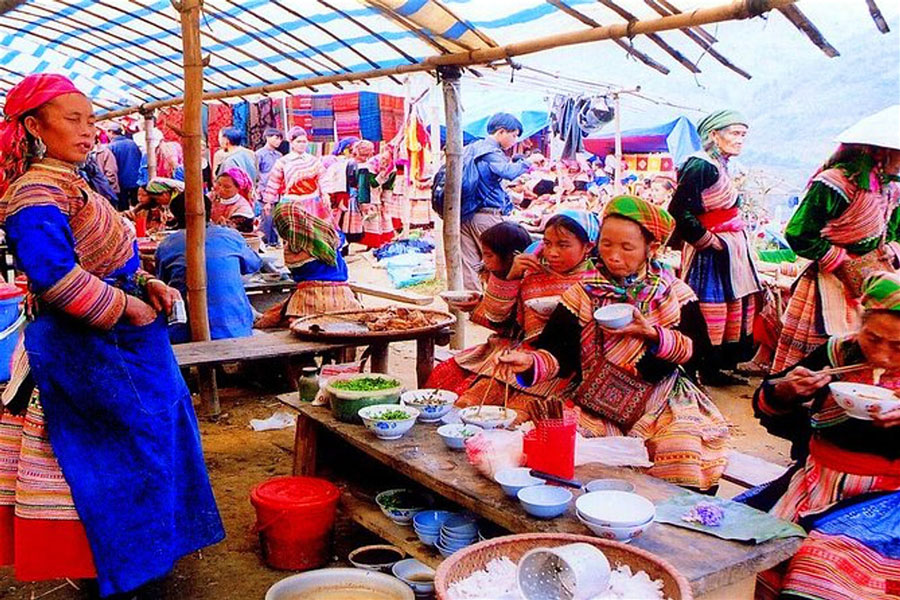
Tourists often claim this is an ideal location for off-the-beaten-track treks, as well as the perfect place to visit colourful ethnic markets that open every weekend. If you have the same taste, let’s find out how to travel to Bac Ha for your best experience from this article.
1. Shop at Bac Ha Market on Sundays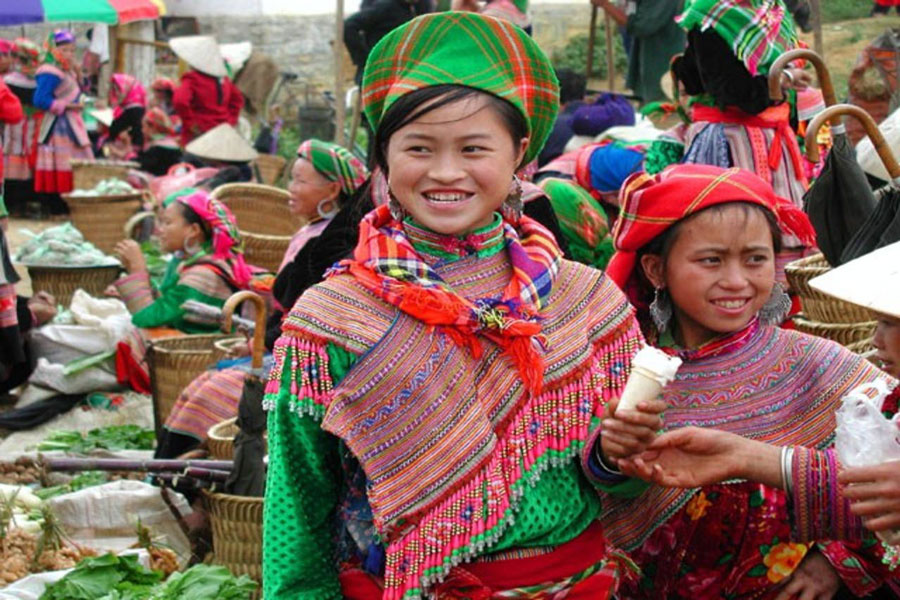
Bac Ha Market is where the minority ethnic groups of Black Dao, Tay, Nung, Phu La, and Flower H’ mong gather and trade on every Sunday morning. When it takes place, it attracts not only most of the villagers from the surrounding hillside coming to buy and sell a wide variety of goods, exchanging news and making friendships, but also lots of tourists paying a visit to shop for brilliant souvenirs, witness the vibrant ethnic culture as well as experience finest regional traditions.
Bac Ha market really is a show of smiles and vibrant colors. While trading goods may be one of the primary purposes, what makes Bac Ha Market special is how much joy, smiles, and laughter are exchanged. At the Bac Ha fair, there is no distance between the tribes, no language barriers or regional contrasts. Everyone comes together for one purpose – to make an honest living and bring joy to the ones around them.
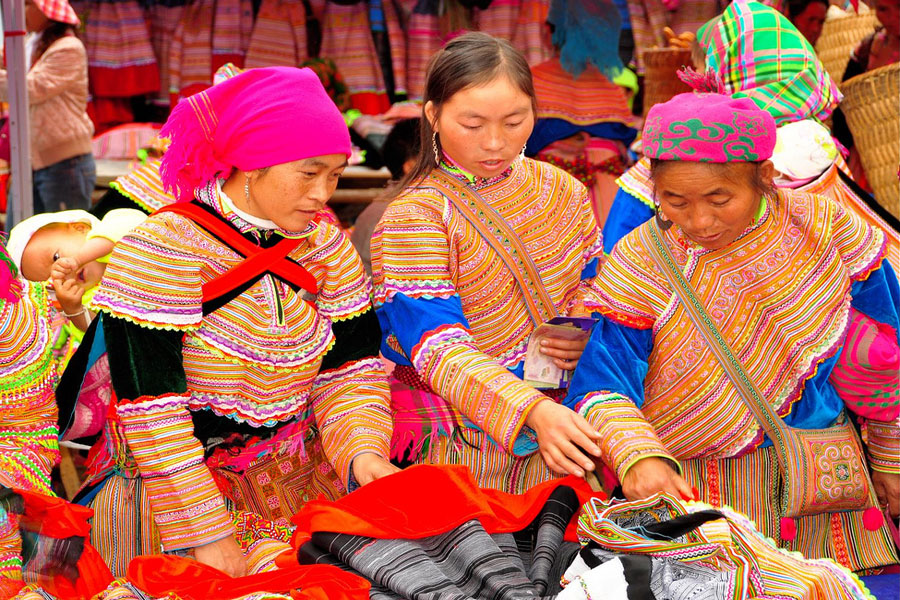
Keep an eye out for clothing and accessories sold in this market. Various items represent the various cultures and you will be able to tell them apart by the contrasting colors and patterns. Every item is handmade and intricately sewn as none-factory-made products. The range of choice is staggering and most tourists walk around for an hour at least before diving into the haggling. The section that draws the most attention is the one selling Vietnamese ethnic minority clothes, and justifiably so. The eye-catching rainbow of textiles on display is immense and any item of Vietnamese hill tribe clothing makes a great souvenir for anyone back home. There are also other sections if you look for art, pottery, handicrafts, textiles, jewelry, and handbags at some of the other stalls around.
2. Or at Can Cau Market on Saturday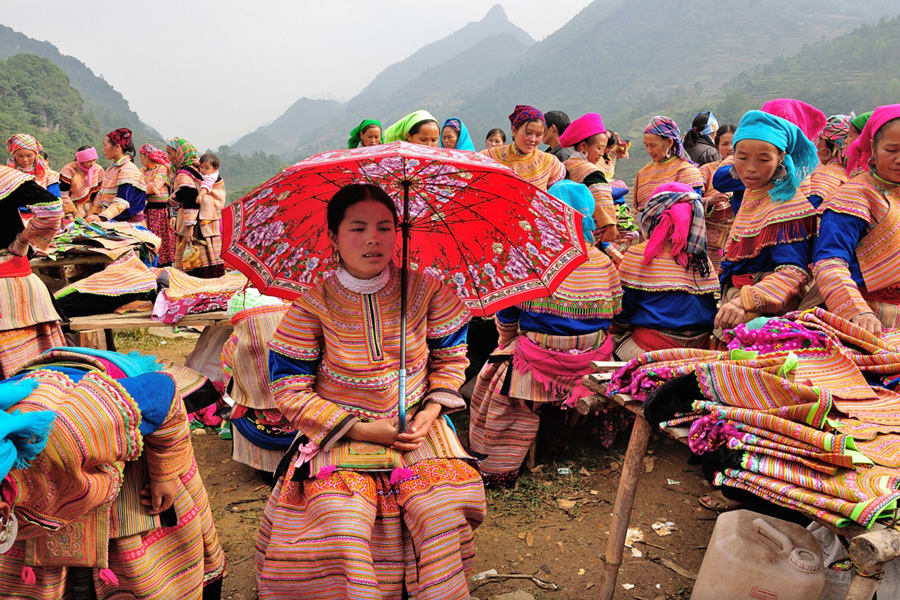
This Saturday market, 20km north of Bac Ha, attracts a growing number of visitors. It’s still a magnet for the local tribal people though, including Flower Hmong and Blue Hmong. The market spills down a hillside with basic food stalls on one level and livestock at the bottom of the valley, including plenty of dogs. The hundreds of stalls are equally as captivating, row upon row of colourful handcrafted goods, each item the result of hours of meticulous handicraft. As well as the amazing textile products and colourful homeware on offer, locals trade livestock and fresh produce. The atmosphere in the market is lively and inviting, drawing the crowds into the colourful bazaar.
3. Visit Hoang A Tuong (Meo King) Palace:
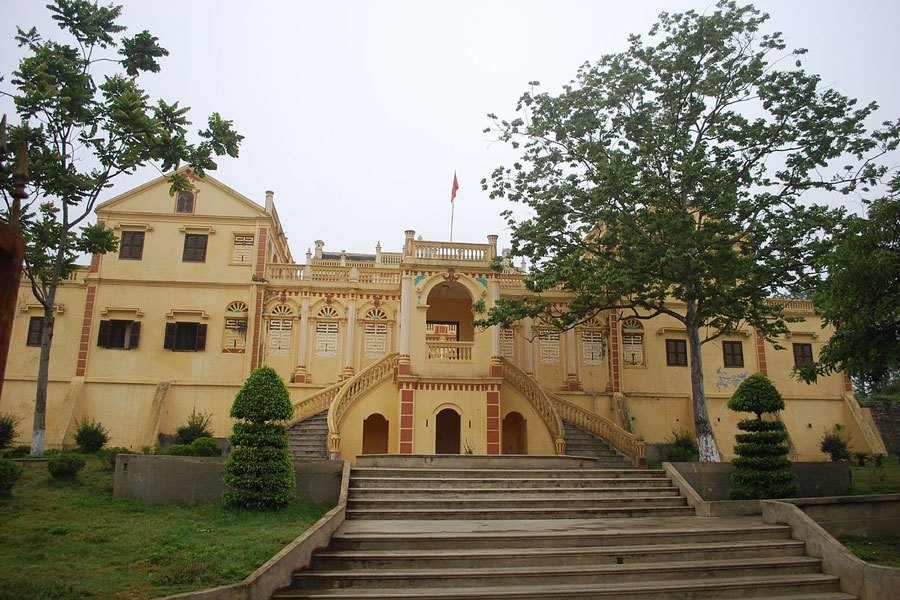
Located in the center of Bac Ha Town, built since 1914 and completed in 1921 by the French, Hoang A Tuong is a large palace constructed in a kind of ‘oriental baroque’ style and attached to a tumultuous history of Bac Ha. Prior to 1945, Bac Ha was a semi-colonial society in which the wealthy upper class, including the Tay chief Hoang A Tuong, exploited the working class by occupying fertile lands and monopolizing the sale of essential products such as salt and foods. This place is the combination of French and Chinese architectural style with a two-story structure. Its long and imposing corridor reflects the glorious time gone by.
4. Discover Ban Pho Village:
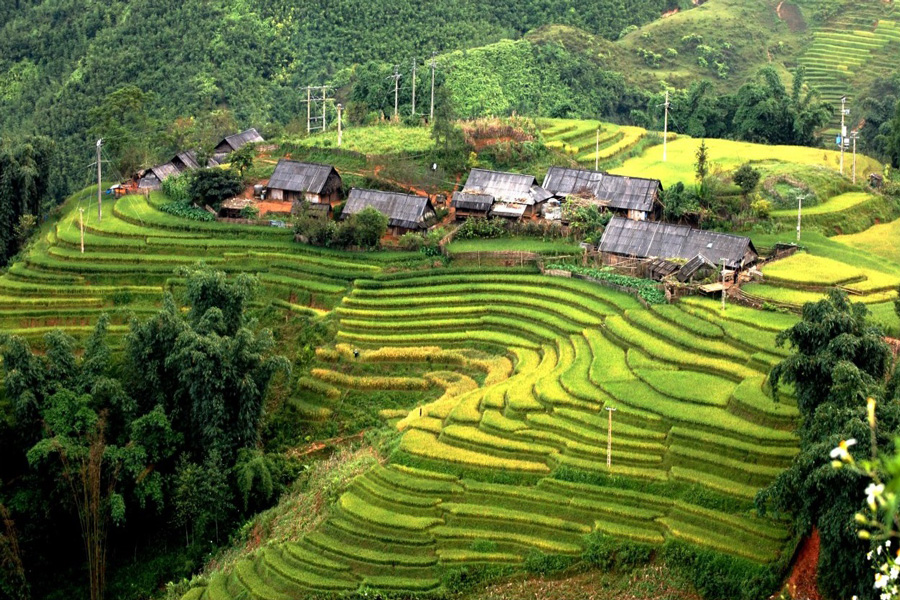
From Bac Ha Town, traveling on winding roads clinging to the slopes of Hoang Lien Son mountain range about 4km, with the verdant valley of corn and tender rice colored beneath and immense plum forest on both sides, you will reach Ban Pho Village. Mingling into the vast blue of the endlessly stretching mountains are houses of H’mong people, which look like a bird’s nest sticking to the mountainside. Visiting an H’ mong family, you will be warmly treated with the special home-made dish Thang Co and wine, which is made from rice and corn.
5. Stay at Hoang Thu Pho Village:
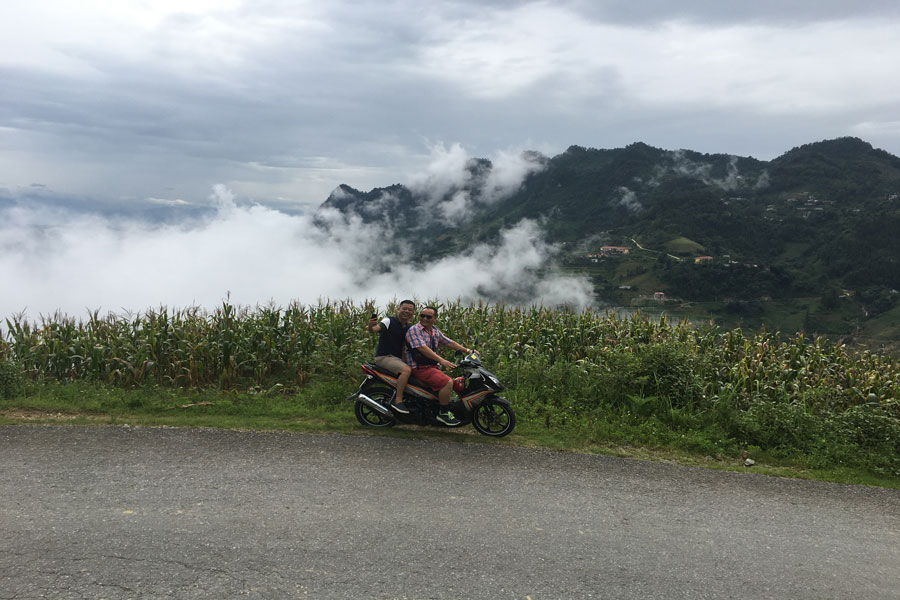
From the center of Bac Ha District, you can take a motorbike drive on a 12km journey to get to Hoang Thu Pho, a village is known for its ancient snow tea trees in the forest and plum and peach fruits, also home to a large community of friendly and hospitable H’ mong ethnic people. Traveling Hoang Thu Pho, you can admire the beautiful landscapes on either side of the street, watching majestic mountains rising to the sky and enjoying the freshness in the air.
From afar, Hoang Thu Pho looks like a painting of immense greenery of trees, corn and rice fields as a harmonious combination of nature and life that is waiting to be discovered. Hiking around the village, you will feel nothing but totally relax exploring the land with sounds and melodies of mountains and streams running through, and birds singing in the jungle. You can even experience a home-stay in a wooden house and enjoy corn wine and char-grilled chicken for dinner.
For most first-timers, we suggest a 2D1N for you to have some fantastic trekking opportunities as well as to witness the lively market at Bac Ha (at weekend, of course).
Day 1: Bac Ha Market – Hoang Thu Pho Village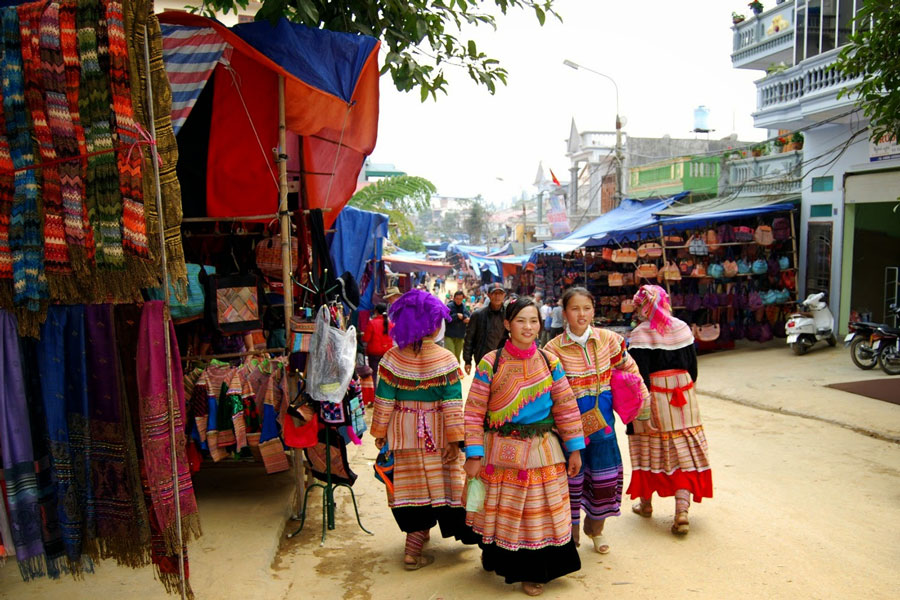
Visit the Bac Ha Market in the early morning to avoid the tourists traffic and see the market in full swing. Enjoy your shopping and have a taste on some local foods. Then trek to Hoang Thu Pho Village for ethnic casual lives experience and mountainous breathtaking views admiring. Have an overnight stay in a wooden house after dining with the host.
Day 2: Hoang A Tuong Palace – Ban Pho Village
Visit the Hoang A Tuong Palace to see the unique architecture and have a memory about the historical attraction. Then move on to Ban Pho to have a full view on beautiful landscapes and discover the H’mong culture and practice at the village.
If you are a veteran backpacker, please feel free to manage the trip on your own and alter it when needed, else, we recommend you join a tour organized by a professional company, that can free you from hassles and keep you safe throughout the journey.
Bac Ha also brings some rare but fantastic foods from the highland people. Don’t miss them while you are still there.
Thang Co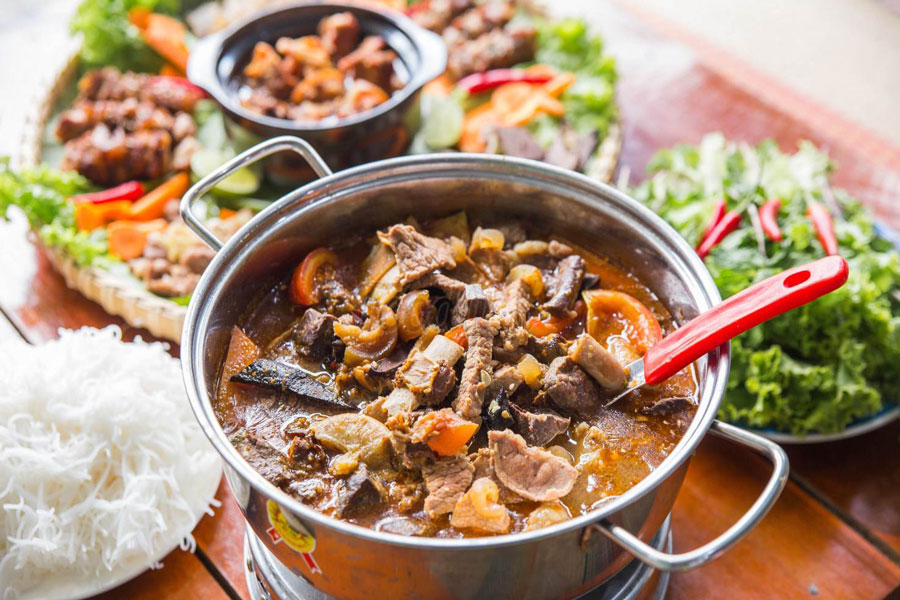
Thang Co is widely known as the most traditional dish of H’mong ethnic group. This food is made from beef, buffalo, pork and horse meat. However, local residents often use horse organs such as heart, liver, bone, and meat to cook this dish. All these organs are put in a big pan of water and stew for a long time. Some particular seasoning and vegetables are often served with the dish to reduce the fat taste.
Bac Ha sour noodles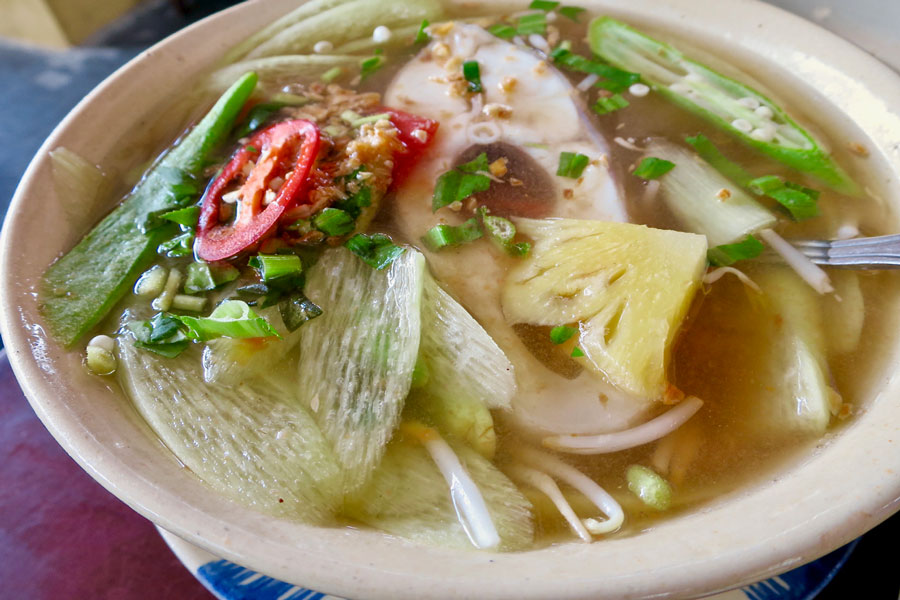
Processing sour noodles, the chef uses indispensable raw materials: pickles, green vegetables (lettuce, basil) finely chopped; pounding roasted sesame and peanuts; a few seals to add special flavor; and of course noodles and broth. Before tasting this food, you should add some salt because this noodle will be slightly fainter for people from other places. Sour Noodle should be served cold, so it is the good choice for summer.
Xoi ngu sac (Five-color sticky rice)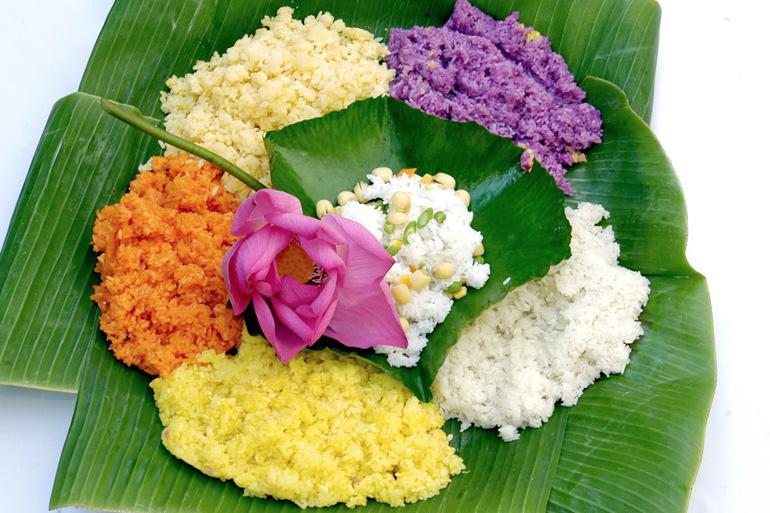
This is the traditional dish of Tay ethnic people. The name comes from the fact that it has five colors. These five colors represent the five elements of life in their belief: yellow is earth, green is plant, red is fire, white is metal, and purple is water. No chemical is required to make this colorful sticky rice, only natural leaves are used. The leaves are boiled before being put into a large bowl with rice to create different colors.
Banh chen (Chen cake)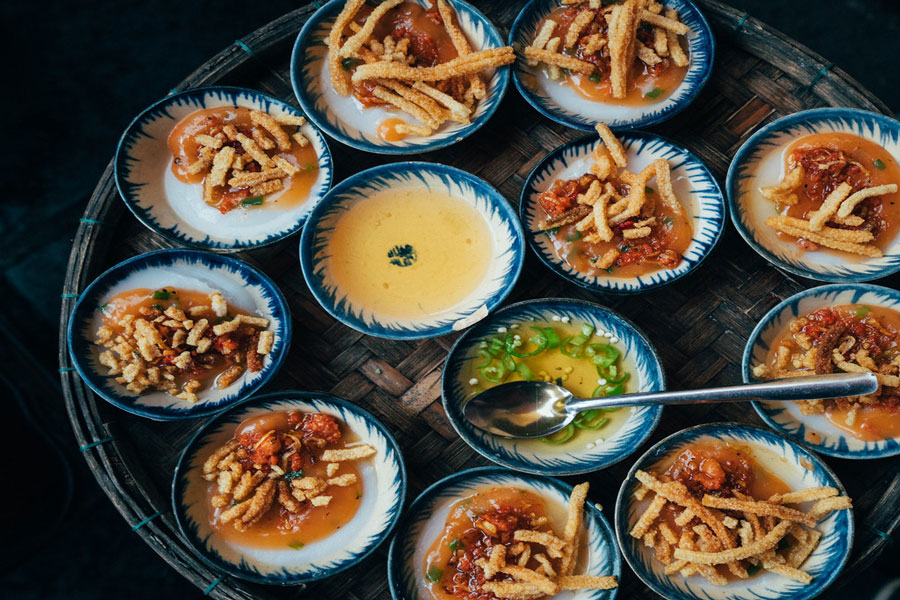
Chen cake is the combination of rice flour and corn flour. When Pau po cu is fragrant but a little bit dry and not so sticky, local people have added rice flour to make it stickier and softer. Similar to Pau po cu, Chen cake is wrapped in banana leaves and steamed in hot water.
Pau po cu (Corn cake)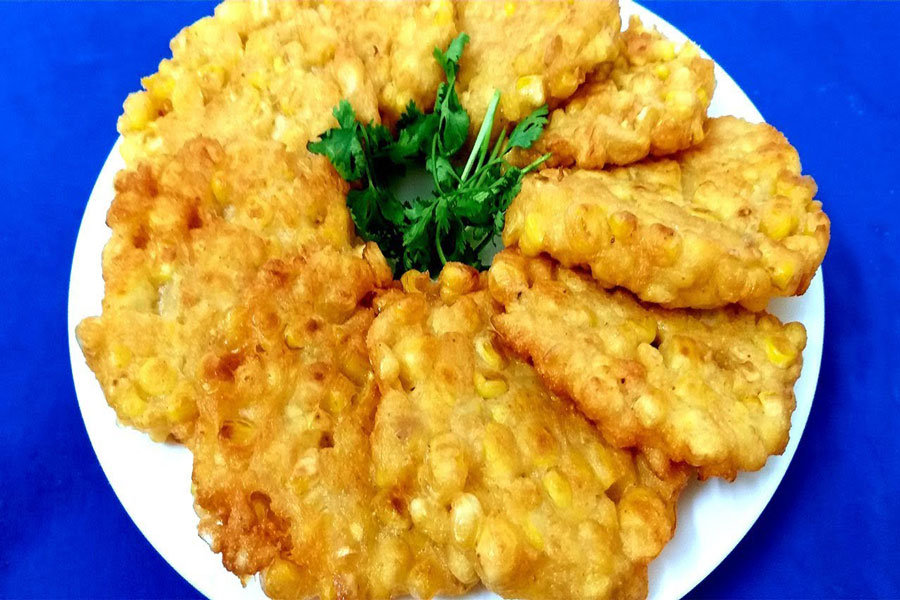
This is another dish made of corn that will make your trip to Bac Ha unforgettable. Corn is ground, put into banana leaves and steamed in several hours. Pau po cu is sweet, fragrant, and sticky. Local people eat it as a snack; however, you can enjoy this cake for breakfast as well. Pau po cu can be stored for a week since it is soaked in water.
Bac Ha weather is characteristic of Northern Vietnam with alternating spells of the wet and dry seasons. The best time to visit Bac Ha would be during the winter (December to April) as the temperature during this ranges between 19-25 degrees Celsius and both trekking and shopping can be pursued during this time with convenience and ease.

Besides, Bac Ha also has unique festivals celebrated on specific days during the year. Say San Festival and Ruoc Dat Ruoc Nuoc Festival are held from January 2nd – 6th, and January 15th on the lunar calendar in succession. During these two festivals, locals pray for a new year with favorable weather, bumper harvest, and prosperous life. In early June when the plums are ripening, the Horse Racing Festival is celebrated. In addition, the Bac Ha Temple Festival is on July 7th of the lunar calendar. It’s best if you could visit Bac Ha Market during one of these festivals.
From Hanoi, there are several options for transportation for you to take to get to Bac Ha Market.
By train: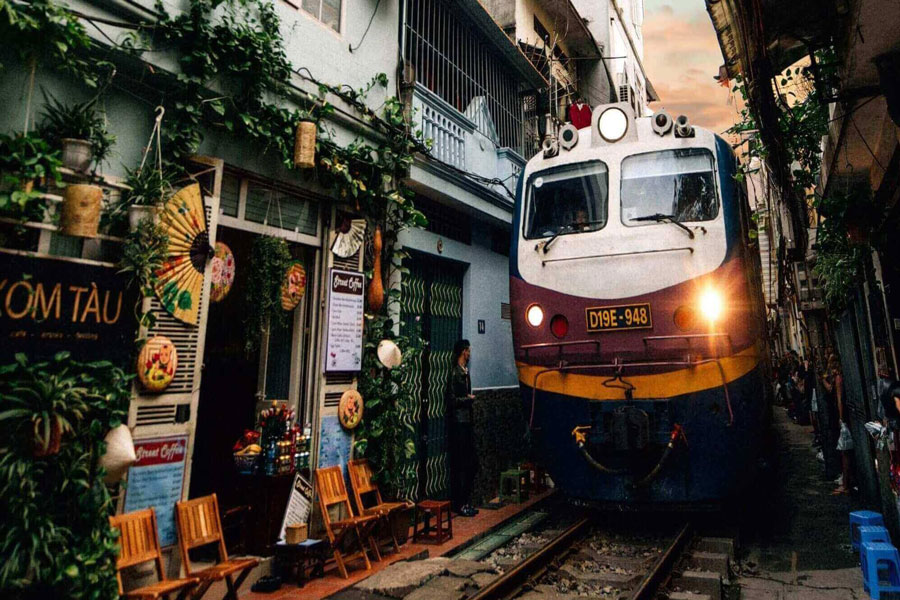
Vietnam Railways runs two daily express trains from Hanoi to Lao Cai, which only stops at major stations so it takes only 5 hours. After arriving at Lao Cai Train Station, you’ll need to get to Lao Cai Bus Station which is 10 kilometers away. From there, there are a lot of buses to Bac Ha from the early morning until 3 pm every day.
By bus:
There are two sleeper buses from My Dinh Bus Station that depart from Hanoi daily, and it will take about six hours to get to Bac Ha.
In addition, you can rent a motorbike to drive yourself from Hanoi to Bac Ha. Although renting a motorbike is not a big deal, we do not encourage you to do this, especially when you first come to Vietnam. Ensure your safety first.
Throughout this article, we wish you to have an idea of how to travel to Bac Ha for your best experience. In case you are looking for your own travel agent, who can offer a wonderful and hassle-free trip to Bac Ha, please feel free to let us know. We always commit our best to make it your once-in-a-lifetime journey.
 France
France  Spain
Spain  German
German  Italian
Italian 

 Vietnam Tours
Vietnam Tours  Cambodia Tours
Cambodia Tours  Myanmar tours
Myanmar tours  Thailand Tours
Thailand Tours  Laos Tours
Laos Tours